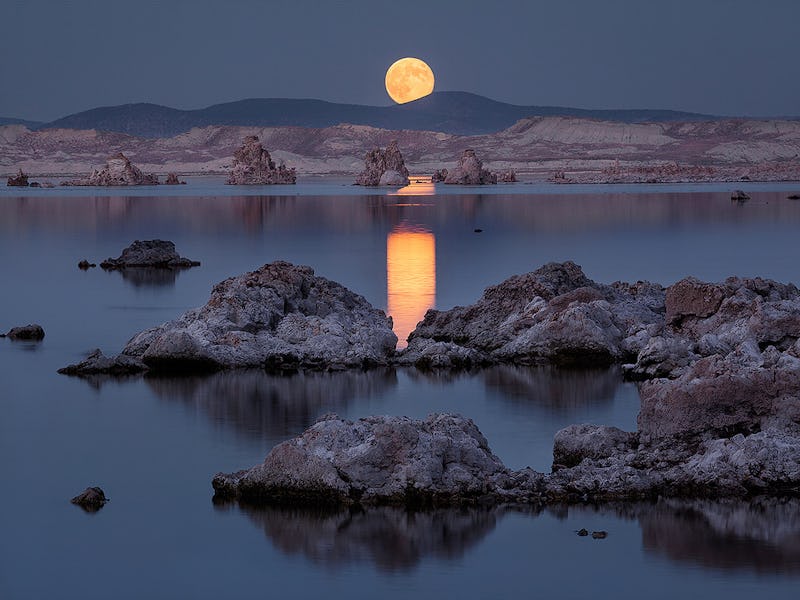Bring a Telescope Out Tonight, See More Than the Full Corn Moon
Tonight's spectacle features an unexpected blue guest.

Americans gazing skyward in the early hours of Wednesday morning will catch sight of a luminous, gold-tinged orb hanging in the cosmos: the full corn moon. But those who plan ahead and come equipped with a pair of binoculars — or, even better, a telescope — will glimpse an unexpected, blue-hued visitor from far away.
The full corn moon, so named because of First Nations traditions linking moon names with the seasons, will be its most full at 3:02 a.m. EDT on Wednesday morning, though viewers who aren’t keen on losing too much sleep can catch it ascending starting at 8 p.m. local time on Tuesday night. People familiar with the constellations will note that the moon will rise in Aquarius.
It so happens that bright blue Neptune, which is currently in opposition, will be hanging out in the area as well.
Blue Neptune, shot by the Voyager 2 in 1989.
Astronomers say a celestial body is in opposition when it is directly opposite the sun, when viewed from Earth. On Tuesday evening, Neptune will reach full opposition, meaning it will be directly illuminated by the sun’s spotlight, allowing it to shine its brightest blue for the first and last time all year. At 2.7 billion miles from Earth, however, the faraway planet is the only one humans can’t see with the naked eye, even when it’s facing the sun directly.
The full corn moon and Neptune won’t quite brush against each other, but they’ll come pretty close. As Space.com explains, they’ll be closest to one another at 1 a.m. EDT on Wednesday, as Neptune passes within 0.73 degrees of the moon on its northwest side.
The full corn moon appears orange-red because of its position close to the horizon, which causes red light to be reflected back toward human eyes.
With a pair of binoculars or a telescope, the unlikely pair should make for an unusually colorful sight. Neptune’s methane-rich atmosphere reflects blue light from the Sun, giving it its oceanic hue. Meanwhile, the full corn moon, hanging low by the horizon as fall moons do, will appear orangey-red because the light it reflects from the sun will pass through the thickest part of the Earth’s atmosphere, which transmits red light. Its position close to horizon is also the reason why the full corn moon will appear so huge, dominating the late summer night sky.